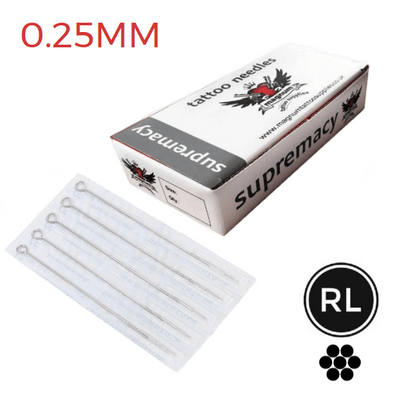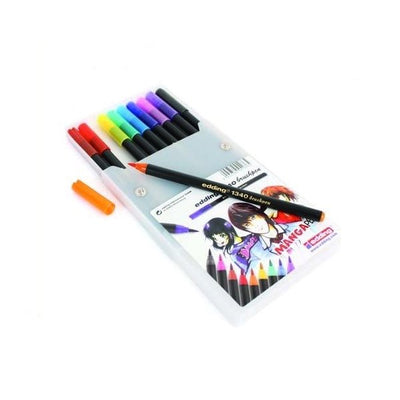Many people struggle to find meaningful ways to express their deep connection to music and its impact on their lives. Music tattoos offer a compelling solution, allowing individuals to permanently showcase their favourite lyrics, bands, or instruments on their skin. However, deciding on a tattoo that accurately captures one's personal and cultural ties to music can be daunting.
So, let us explore the relationship between music and tattoos, helping you understand how these personal artworks can embody your love for music while respecting its rich cultural heritage.
What are music tattoos?
Music tattoos are designs inked on the body that symbolise a person's love for music or commemorate a significant musical influence. These tattoos can range from simple musical notes or symbols, such as a treble clef or a guitar, to more elaborate scenes depicting musical instruments or portraits of favourite musicians.
People often choose music tattoos to express their identity, passion, or a memorable musical experience that has impacted their lives profoundly.
Common music tattoo symbols and their meanings

Music-related tattoos are a popular way to express one's passion for music, its impact on their life, or to pay homage to favorite musicians and genres. These are some common music tattoo symbols and their meanings:
1. Treble clef
A symbol commonly used in music notation to indicate the pitch of written notes. This tattoo often represents a love of music and its universal appeal.
2. Bass clef
Like the treble clef, the bass clef is used in music notation but for lower pitches. A bass clef tattoo can signify a preference for deeper, richer tones, such as those found in genres like jazz or blues.
3. Musical notes (e.g., eighth notes, quarter notes)
These are the most direct symbols of music and can represent a general love for music or a particular melody that holds personal significance.
4. Microphones
They are often chosen by singers, songwriters, or music lovers who appreciate the power of lyrics and vocals. This symbol can represent a voice, be it literally or figuratively, in the world.
5. Guitars
A common symbol for rock music lovers, guitar tattoos often honour the instrument itself or iconic guitarists. They can also symbolise creativity and the personal instrument of one's expression.
6. Vinyl records
Representing nostalgia and a love for classic or vintage music, vinyl tattoos can indicate a deep appreciation for the original richness of music playback before digital media.
7. Mixtape or cassette tape
Similar to vinyl, this is a nod to retro technology and can be symbolic of a specific era in music or a mix of personal favourite songs that have impacted someone's life.
8. Lyrics
Tattooing specific song lyrics is a way to carry a personal mantra or memory that resonates deeply with the individual. It's a literal way to wear one's heart on their sleeve.
9. Pianos and piano keys
Often chosen by pianists or fans of classical and jazz music, piano tattoos can symbolise harmony, complexity, and emotional depth.
10. Headphones
A modern symbol for music lovers, representing immersion in music and personal space where one can disconnect from the world and tune into their favourite sounds.
Music tattoos dedicated to artists and bands

- Band logos: A classic choice is the logo of a favourite band. These can range from the iconic tongue and lips of The Rolling Stones to the unique symbols used by Prince.
- Lyric excerpts: Tattooing a meaningful lyric from a beloved song can serve as a personal reminder of a particular life moment or feeling. The font and design can be customised to match the mood of the song.
- Portrait tattoos: Realistic portraits of favourite musicians, like Freddie Mercury or Amy Winehouse, can be a striking homage. These require a skilled tattoo artist to accurately capture the details.
- Album art: Some choose to ink iconic album covers or elements of them, like Pink Floyd's "Dark Side of the Moon" prism or the Beatles' "Abbey Road" silhouette.
- Instrument tattoos: For those who play music or have a deep connection to a particular instrument, tattooing an image of that instrument, like a guitar, piano, or violin, can be symbolic.
- Sound waves: A more modern approach could be tattooing the sound wave pattern of a specific part of a song that holds special significance.
- Musical notes and symbols: Incorporating musical notation, such as a treble clef or a series of notes from a significant melody, offers a subtle nod to one's musical passion.
Musical symbols with other elements
- Nature and music: Integrate musical notes or a treble clef with natural elements like flowers, vines, or trees. For example, a treble clef could transform into the stem of a rose, symbolising growth and passion for both music and life.
- Celestial music: Combines musical symbols with celestial elements such as stars, moons, or planets. A design could feature a staff line that flows into a night sky with stars forming notes, representing the idea of music as a universal language.
- Water and waves: Use the fluid form of musical notes or a G-clef and blend it with water waves or ocean themes. This can symbolise the flow and transformative power of music, much like water shapes the shore.
- Heartbeat and music: Incorporate the waveform of a heartbeat with musical notes or bars, showing how music is vital to a person's existence, much like a heartbeat.
- Animal motifs: Animals can be styled out of musical symbols, like a bird shaped from musical notes or a treble clef turning into a butterfly. This represents freedom, beauty, and the natural melody of life.
- Literary and music: Combine favourite quotes or book imagery with musical elements. For instance, musical notes could flow from the pages of an open book, symbolising how music and stories enrich one's life.
- Cultural symbols and music: Blend musical elements with cultural or spiritual symbols such as mandalas, Celtic knots, or tribal patterns. It represents a deep connection between one's cultural heritage and their love for music.
- Architectural elements: Using elements like city skylines or famous landmarks with musical notes floating around or emerging from them can represent the role of music in a person's life journey or their connection to a particular place.
Cultural significance of music tattoos

Music tattoos often hold deep cultural significance, serving as a form of self-expression that symbolises one's passion for music or connection to a particular song, artist, or genre. These tattoos can represent personal or shared experiences, evoking memories of specific moments in life that are tied to certain melodies or lyrics.
For many, music tattoos also signify identity and belonging, marking their affiliation with a cultural or musical community.
Additionally, these tattoos can be a tribute to influential musicians or an embodiment of one's musical journey, making them a powerful visual statement of personal and cultural values.
Final thoughts
Music tattoos are more than just art; they are a powerful way for people to express their identity and connections to music. Each tattoo tells a story, showing the personal and cultural significance of music in our lives. Through these tattoos, individuals carry and share their love for music visibly and proudly.
If you're inspired to begin your tattoo journey, explore our range of tattoo products, including inks, machines, and aftercare products, to ensure the best results for your musical masterpiece.



























































 Studio supplies
Studio supplies












 Power & batteries
Power & batteries








 Aftercare
Aftercare





















 Apprentice
Apprentice


 Piercing & jewellery
Piercing & jewellery







 PMU supplies
PMU supplies




 New arrivals
New arrivals
 Gift vouchers
Gift vouchers
 Shop all
Shop all















































